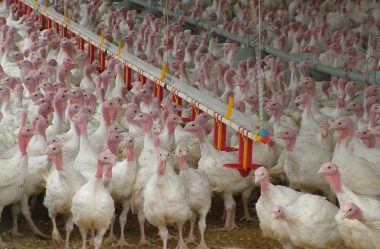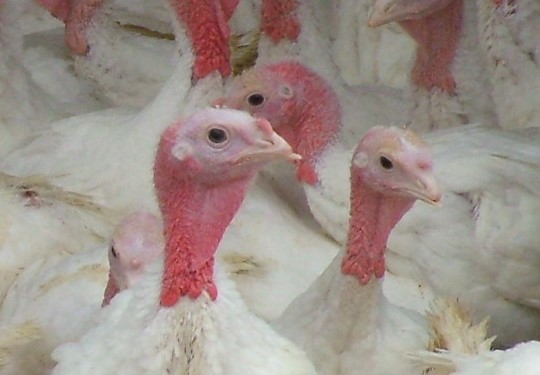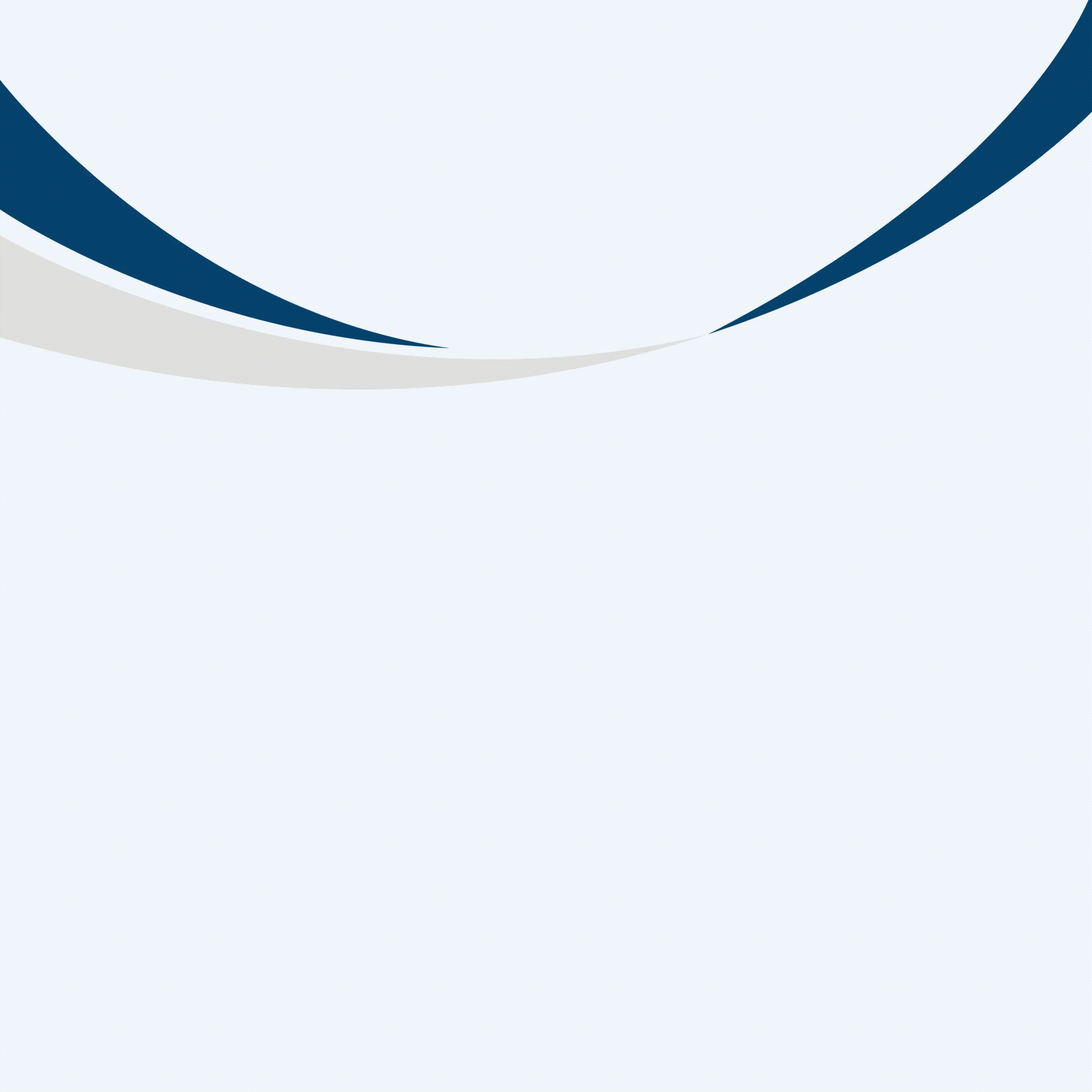Without an approved treatment, histomoniasis remains a growing problem among turkeys. The only realistic option for controlling the disease right now, is limiting its transmission once it enters a flock.
By Elle Chadwick, PhD
Consultant
Ag Health Consulting, LLC
LaGrange, Georgia
When we were able to use nitarsone, histomoniasis was well controlled. Research on the disease stopped from the 1970s until the 2000s. Since the drug was pulled from the market in the mid-2000s due to concerns about inorganic arsenic levels in treated birds, histomoniasis — commonly known as blackhead disease — has become a re-emerging disease.
Uncontrollable spread
Producers may lose only a few birds, but they can also lose an entire flock. The main issue I see in the field is uncontrollable spread of histomoniasis and the loss of entire flocks because growers don’t recognize signs of the disease.
The microscopic, single-celled protozoan parasite Histomonas meleagridis responsible for histomoniasis can infect turkeys of any age. It causes inflammation of the ceca, then liver necrosis that ultimately kills the turkey.
Cecal and liver lesions are easy to spot during necropsy, but it’s not always easy to identify living birds developing histomoniasis. To recognize the start of the disease in a flock, all mortality through grow-out would need to be necropsied to look for lesions, but this just isn’t feasible with the number of poults raised in current commercial production.

Intermediate host
H. meleagridis uses the eggs of the roundworm Heterakis gallinarum as protection to survive outside of turkeys and chickens. In other words, H. gallinarum can be considered an intermediate host for H. meleagridis. It only takes a few turkeys to eat contaminated H. gallinarum eggs to set off a histomoniasis outbreak.
The eggs of H. gallinarum need about 1 month to fully mature into worms. That’s why worms aren’t found in infected birds. Histomoniasis, however, will kill a turkey within 2 weeks. Characteristic lesions of the disease appear in the cecum as early as 4 days after infection while liver lesions are seen about 1 week later.
During the 2 weeks poults are infected but alive, they will transmit the parasite to their flockmates through cloacal contact. H. meleagridis survives for a few hours after an infected poult dies, so it’s important to remove sick and dead birds to prevent the spread of the parasite.
Prevention nearly impossible
Preventing the entry of H. meleagridis into the turkey house has been considered a control strategy, but it’s difficult to impossible because the eggs can be found inside and outside of poultry houses.
Three factors increase the likelihood of H. gallinarum eggs getting into a turkey house. If there’s a broiler breeder facility within a mile of the turkey facility,1 there’s an increased risk. Breeders are an ideal host for H. meleagridis and, due to their prolonged production life, tend to have heavy cecal worm burdens.
Breeders shed contaminated H. gallinarum eggs into their litter, bringing us to the second factor: The microscopic eggs of H. gallinarum stick to various objects like shoes, farm equipment or darkling beetles. Earthworms eat the eggs at a breeder farm and then migrate to a turkey farm. So, shared pests, equipment or personnel between a breeder or turkey farm increases the risk that H. gallinarum eggs get into the turkey house.
Third, if shavings are dumped outside of a turkey facility, there’s an increased likelihood that H. gallinarum eggs harboring H. meleagridis will be brought into the house when the shavings are moved inside.
Strategies to curb transmission
You can see why limiting the transmission of H. meleagridis is a more realistic option for histomoniasis control. It can limit mortality from the whole flock to just a few birds.
The first step is making sure turkey producers and their growers recognize the clinical signs of a histomoniasis outbreak. They need to especially watch for sulfur-colored droppings or yellow vent feathers, which indicate liver failure. These turkeys should be necropsied, and if lesions on the cecum or liver are found, the flock’s veterinarian should be notified immediately.
If caught early and only a portion of a turkey house is infected, erecting partitions may be helpful. Separating affected poults from the rest can decrease transmission of the parasite, most likely because it decreases cloacal contact. However, partitions should only be used if it’s clear which poults are affected by histomoniasis. If you aren’t sure, partitions decrease space between birds and that in turn increases contact between sick and healthy poults, worsening spread of the disease.
Deworming not helpful
Deworming during an outbreak is not helpful. Although eating cecal worm eggs starts an outbreak, it is not worth deworming an entire flock because usually only a very few poults have eaten the contaminated eggs, and common dewormers do not kill the eggs. In addition, some growers have complained that deworming leads to gut irritation. This irritation increases the shedding of the cecal tissue lining, which is where H. meleagridis attaches. More shedding means more transmission of the parasite.
In my experience, poor poult quality correlates with an increased likelihood for histomoniasis and poorer outcome. It’s not unusual for turkeys to have infections with Eimeria spp. or Escherichia coli a few weeks before a histomoniasis outbreak. I have seen about 50% mortality due to histomoniasis in poor-quality flocks that also have a coccidiosis problem. In contrast, mortality from histomoniasis among good-quality poults on the same farm was less than 1%.2
Although there are currently no treatments for histomoniasis, universities and animal health companies are testing various vaccines and anti-protozoal treatments.
In the meantime, remember that turkey producers and growers need to learn the early signs of histomoniasis. Mortality from histomoniasis needs to be removed promptly, and cull heavily if an outbreak occurs. Partitions may help in an outbreak if used appropriately. Encourage bird movement so that poults are not huddling in large groups, which can increase cloacal contact. Sick birds will hide within a group to avoid being prey, so during an outbreak, observe groups closely to try and find infected poults.
Hopefully, these measures will prevent significant losses from histomoniasis until a preventive or new treatment can be developed.
1 Jones RE, Rives DV, Fletcher OJ, Martin MP. Histomoniasis outbreaks in commercial turkeys in the southeastern United States: Proximity of broiler breeder farms as a potential risk factor in disease development. J Appl Poult Res. 2020;29(2):496-501.
2 Chadwick E, Beckstead R. Two blackhead disease outbreaks in commercial turkey flocks were potentially exacerbated by poor poult quality and coccidiosis. Avian Dis. 2020. In press.
Source: Poultry Health Today










